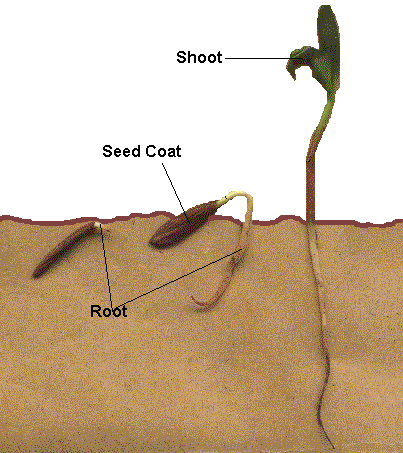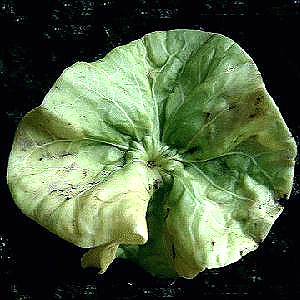Germination is the beginning of growth of a seed. The seed must have the right level of warmth and moisture to begin to germinate. First, the seed leaves absorb moisture which allows the food reserves to become available to the new plant. It can then produce a root so that it can find its own water, followed by a shoot which develops from the plumule, which will allow it to absorb light. The plant needs both water and light to grow.
Sometimes, the seed leaves, or cotyledons, remain below the surface of the soil, as in germination of a Pea, below. This is called Hypogeal Germination.

In some species, the seed leaves remain on the new shoot and are brought above the ground, as in germination of the Ash tree, below. This is called Epigeal Germination.

There is one other type of germination that is found only in a few tropical plants. In this case, one special type of leaf is formed above the ground. This special leaf is not a cotyledon, which remains under the ground. The first leaf is a round dissected or frilly circular leaf with a central stalk like an umbrella, and its purpose is to protect the proper shoot from being trampled on or otherwise damaged before the new plant has enough resources to replace it. As it is green, it also gathers food by photosynthesis, which enables the root and proper shoot to grow under the ground, so that the new plant is already established when the real shoot emerges. Because the development of the shoot can not be seen, this type of germination is called Cleistogeal Germination from the Greek cleisto-, which means hidden.
This is the frilly leaf of a Combretum seed from Zambia.
